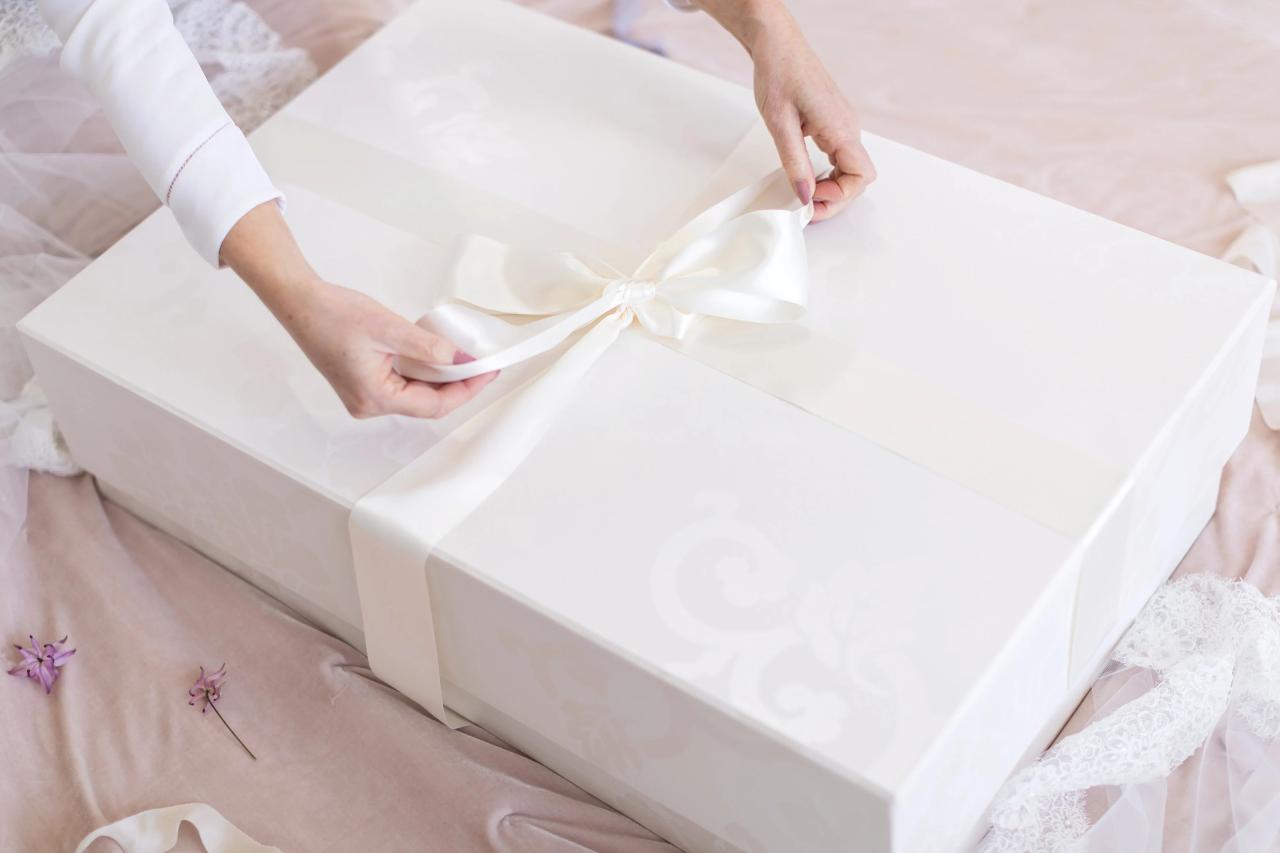Pre-Washing Preparations
How to wash a wedding dress – Before you begin cleaning your wedding dress, careful preparation is key to preserving its beauty and preventing damage. This involves gathering the necessary materials, checking the care label, and addressing any existing stains. A methodical approach will ensure a successful cleaning process.
Necessary Materials for Wedding Dress Washing
Gather the following items before starting: a gentle, pH-neutral detergent specifically designed for delicate fabrics (avoid harsh chemicals), lukewarm water, two large clean containers or basins (one for washing and one for rinsing), clean, soft white towels, a soft-bristled brush (optional, for spot-treating), rubber gloves (to protect your hands), and a clean, dry surface for the dress to dry on.
Checking the Dress’s Care Label
Always check the care label sewn into your wedding dress’s seam before attempting any cleaning. This label provides crucial information about the fabric composition and recommended cleaning methods. Ignoring this label could lead to irreversible damage to your dress.
Spot-Treating Stains on a Wedding Dress
Before washing the entire dress, address any visible stains. Gently blot (never rub!) the stain with a clean, damp cloth. For tougher stains, apply a small amount of gentle detergent directly to the stain, and gently work it in with your fingers or a soft-bristled brush. Rinse thoroughly with cool water and blot again. Repeat as needed, but avoid excessive scrubbing.
Pre-Washing Preparations Checklist
- Gather necessary materials: gentle detergent, lukewarm water, two basins, towels, soft brush (optional), rubber gloves.
- Check the dress’s care label for fabric type and cleaning instructions.
- Spot-treat any visible stains using a gentle detergent and blotting technique.
- Prepare a clean, dry surface for drying the dress.
Hand Washing Techniques

Source: arthurcopelandcleaners.com
Hand washing is generally the safest method for cleaning delicate wedding dresses. It allows for gentle handling and minimizes the risk of damage. The following steps will guide you through the process.
Step-by-Step Guide to Hand Washing a Wedding Dress, How to wash a wedding dress
- Fill one basin with lukewarm water and add a small amount of gentle detergent. Swirl gently to dissolve the detergent completely.
- Submerge the dress in the soapy water, ensuring it is fully saturated. Avoid harsh scrubbing or twisting.
- Gently swish the dress around in the water for a few minutes, focusing on soiled areas.
- Drain the soapy water and refill the basin with fresh, lukewarm water.
- Rinse the dress thoroughly in the clean water, repeatedly changing the water until all traces of soap are gone.
- Gently squeeze out excess water, avoiding twisting or wringing.
Supporting the Dress During Hand Washing
Support the weight of the dress evenly to prevent stretching or damage. Avoid lifting it by only one section. Use your hands to gently support the dress throughout the washing process, ensuring that the fabric is never stretched or pulled taut.
Handling Delicate Beading or Embellishments
If your dress has delicate beading or embellishments, handle these areas with extra care. Avoid scrubbing directly on them. If necessary, gently clean around them with a soft brush and then rinse thoroughly. Pay close attention to ensure no beads or embellishments are loose or damaged.
Machine Washing Methods
Machine washing a wedding dress is generally not recommended, unless the care label explicitly permits it. However, for certain fabrics and with extreme caution, it might be considered. Always prioritize hand washing for delicate fabrics.
Suitability of Machine Washing for Different Wedding Dress Fabrics
Fabrics like silk, delicate lace, or heavily beaded materials should never be machine washed. Some sturdier fabrics, such as certain types of satin or taffeta,
-might* tolerate machine washing on a delicate cycle, but hand washing is always the safer option. Always refer to the care label first.
Machine Washing Settings

Source: shopify.com
If machine washing is deemed appropriate based on the care label, use a delicate cycle with cold water and a low spin speed. Use a mesh laundry bag to protect the dress from snags and tears. Avoid using harsh detergents or bleach.
Hand Washing vs. Machine Washing
| Fabric Type | Washing Method | Advantages | Disadvantages |
|---|---|---|---|
| Silk, Lace, Beaded | Hand Wash | Minimizes damage risk, preserves delicate details | Time-consuming |
| Taffeta, Sturdy Satin | Hand Wash or Delicate Machine Wash (mesh bag) | Faster than hand washing (machine), less physically demanding | Potential for damage if not handled correctly |
Using Mesh Laundry Bags
A mesh laundry bag acts as a protective barrier, preventing the dress from snagging or getting tangled in the washing machine’s components. This reduces the risk of damage during the washing cycle.
Drying and Storage
Proper drying and storage are crucial for preserving your wedding dress’s condition and preventing yellowing or damage. Avoid harsh methods and opt for gentle, careful techniques.
Methods for Drying a Wedding Dress

Source: drycleanerstogo.com
Never put a wedding dress in a dryer. Air drying is the safest method. Gently roll the dress in a clean towel to absorb excess water. Then, lay it flat on a clean, dry surface, away from direct sunlight or heat. You can also hang it on a padded hanger, but ensure the hanger is wide enough to support the weight of the dress without causing stretching or damage.
Folding and Storing a Wedding Dress
Once the dress is completely dry, fold it carefully, avoiding sharp creases. Use acid-free tissue paper between layers to prevent yellowing. Store the dress in a breathable garment bag, in a cool, dark, and dry place. Avoid attics or basements, which can be prone to temperature and humidity fluctuations.
Creating a Suitable Storage Environment
A cool, dark, and dry environment is essential. Avoid direct sunlight, as UV rays can cause discoloration. Consistent temperature and humidity are also important to prevent yellowing or mildew.
Using a Dress Form for Storage
A dress form provides excellent support and helps maintain the dress’s shape. It prevents creasing and keeps the dress looking its best during storage. Ensure the dress form is clean and appropriately sized for your dress.
Dealing with Specific Issues
Despite careful cleaning, some issues may arise. Knowing how to address common problems will help preserve your dress.
Handling Yellowing or Discoloration
Yellowing often results from exposure to light or improper storage. Professional cleaning may be necessary to address significant yellowing. Prevention is key; proper storage is crucial.
Removing Specific Stains
Different stains require different treatments. For wine stains, blot immediately with a clean cloth. For grass stains, try a mixture of cold water and mild detergent. Makeup stains often respond well to gentle rubbing with a damp cloth. Always test any cleaning solution on an inconspicuous area first.
Common Problems and Solutions
- Problem: Stretching or damage to delicate fabric. Solution: Hand washing and gentle handling.
- Problem: Yellowing or discoloration. Solution: Proper storage and professional cleaning if necessary.
- Problem: Persistent stains. Solution: Spot treatment with appropriate stain removers, professional cleaning for stubborn stains.
Common Wedding Dress Fabrics and Washing Recommendations
- Silk: Hand wash only, with extreme care.
- Satin: Hand wash preferred, delicate machine wash possible with a mesh bag.
- Lace: Hand wash only, with extra gentle handling.
- Tulle: Hand wash or delicate machine wash with a mesh bag.
- Organza: Hand wash preferred, delicate machine wash possible with a mesh bag.
Professional Cleaning Considerations
Professional cleaning offers expertise and specialized solutions but comes at a cost. Weighing the pros and cons is crucial.
Costs and Benefits of Professional vs. At-Home Cleaning
Professional cleaning is more expensive but guarantees expert handling and specialized cleaning solutions for delicate fabrics and stubborn stains. At-home cleaning is more affordable but requires careful attention to detail and carries a higher risk of damage.
Process Involved in Professional Wedding Dress Cleaning
Professional cleaners typically assess the dress, identify stains, and choose appropriate cleaning methods and solutions based on the fabric type and condition. They may employ specialized equipment and techniques to ensure thorough cleaning without damage.
Factors to Consider When Choosing a Professional Cleaner
Choose a reputable cleaner with experience in handling wedding dresses. Check reviews and inquire about their cleaning methods and insurance policies to protect your investment.
Types of Cleaning Solutions Used by Professional Cleaners
Professional cleaners use specialized, pH-neutral detergents and solvents designed for delicate fabrics. They avoid harsh chemicals that could damage the dress.
Illustrative Examples
Understanding the specific cleaning requirements for different fabrics is crucial for preserving your wedding dress.
Properly cleaning a wedding dress requires careful attention to detail, varying based on the fabric. For instance, delicate lace might need a professional cleaner, while others can be hand-washed. This contrasts sharply with the selection process for a guest’s attire; finding the perfect look can be just as important, especially when considering options like those shown on this helpful site for dresses for weddings for 50 year olds , which offers guidance on style and appropriateness.
Returning to wedding dress care, always check the care label before attempting any cleaning to avoid damage.
Cleaning Requirements for Different Wedding Dress Fabrics
Silk: Extremely delicate and prone to damage. Requires hand washing with a pH-neutral detergent in cool water. Avoid wringing or twisting. Air dry flat.
Satin: More durable than silk but still requires gentle handling. Hand washing is recommended, but a delicate machine wash might be acceptable (with a mesh bag) for some types of satin. Air dry flat.
Lace: Delicate and easily damaged. Hand washing with cool water and a mild detergent is essential. Avoid rubbing or harsh scrubbing. Air dry flat, away from direct sunlight.
Visual Appearance Before and After Proper Cleaning
Before cleaning, the dress may show visible stains, discoloration, or dullness. After proper cleaning, the dress should appear bright, fresh, and free from stains, with its original colors and luster restored.
Visual Appearance of a Dress Damaged by Improper Cleaning
Improper cleaning can result in discoloration, shrinking, stretching, or damage to delicate embellishments. The fabric may appear dull, faded, or have visible watermarks or creases.
Expert Answers: How To Wash A Wedding Dress
Can I use bleach on my wedding dress?
No, bleach is far too harsh and will damage most wedding dress fabrics. Always use a gentle detergent designed for delicate fabrics.
How long should I let my wedding dress air dry?
Allow your dress to air dry completely, which can take 24-48 hours or longer depending on the fabric and climate. Avoid direct sunlight.
What if I have a very large stain?
For large or stubborn stains, it’s best to consult a professional wedding dress cleaner. They have specialized techniques and products to handle such situations.
Should I iron my wedding dress after washing?
Ironing should only be done if absolutely necessary and only with a low setting and a pressing cloth to protect the fabric. Consult the care label for specific instructions.
